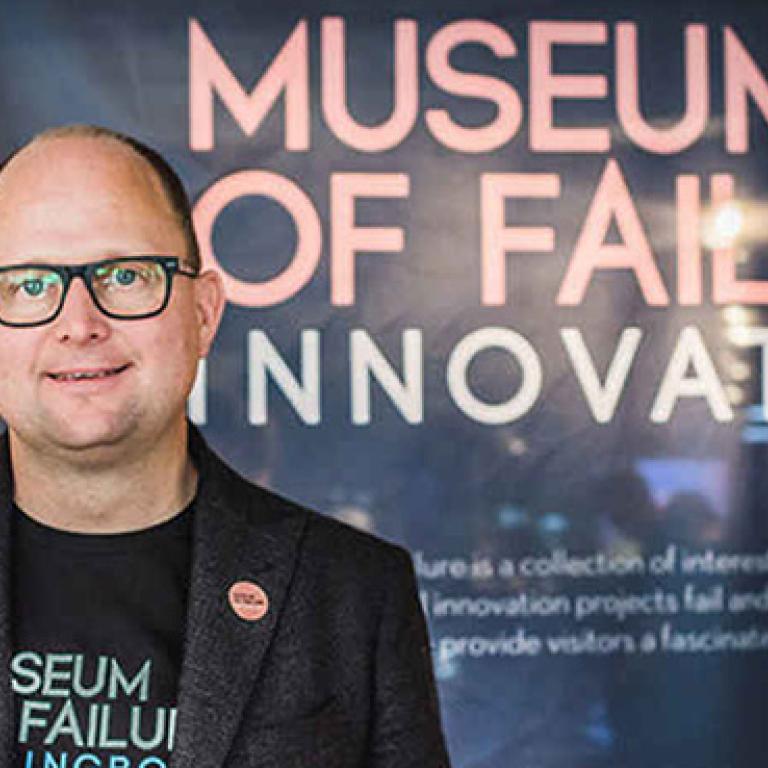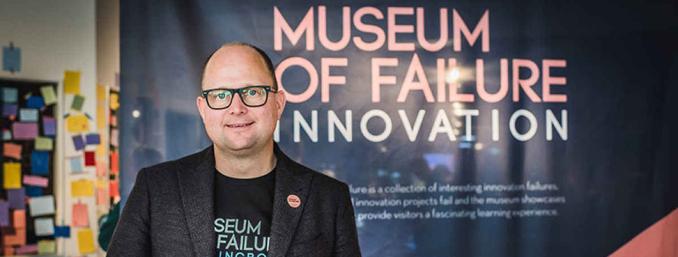
Making a mistake is what makes you human. You can learn from failures. And we all know that every cloud has a silver lining. These are just some of the well-meant bits of advice we use to try and help our family or someone close to us needing some support. But what if it really does go horribly wrong? When an innovative idea isn’t successful at all? Well, even the most genius but failed gadgets and ideas still deserve a warm home – that must have been Samuel West’s intention, conservator of ‘The Museum of Failure’.
The Jeff Bezos’ and Mark Zuckerbergs of this world seem to have been gifted with that Midas touch: anything they touch turns into gold, in no time at all. If you believe in fairy tales, that is. However, for every fantastically brilliant idea, there is a multitude of failed predecessors: no iPhone without the flopped Newton MessagePad, no Ford Mustang without the Edsel, maybe even the most expensive stupidity of the car industry ever. beMatrix, world player in modular stand building systems, continuously invests in innovation and surfs the waves of technological and digital developments. Does this mean that every novel idea or disruptive concept by definition becomes a huge success? Not at all. And that is no problem. Most times, these stumbling blocks, these deadend concepts and prototypes that splutter and implode in fact become a breeding ground for that one, eagerly awaited success.
American psychologist Samuel West has dedicated his Museum of Failure to this, let’s be honest, rather amusing fail to win process and has been touring the world with his exhibition since 2017. His collection features 113 objects to date and keeps growing. Companies that initially refused to even speak to Samuel, hiding away because they felt ashamed, now pick up the phone themselves. Failing is no longer frowned upon, but integral to the creative process. Especially for beMagazine, Samuel has listed his 4 most favourite flops.
"Failure is a better teacher than succes." - Samuel West
1. Colgate Beef Lasagna
At some point in the 1980s, toothpaste manufacturer Colgate launched
a range of frozen ready meals, including a beef lasagne. It soon turned
out to be a mistake, due to the brand’s strong associations with
oral hygiene and minty flavours. But what’s even more astonishing
is Colgate's response: when the product — or rather, a replica,
as Samuel West was unable to find any examples of the original
packaging — entered the Museum collection, Colgate’s lawyers were
adamant they’d never heard about a beef lasagne. That leaves two
options: either Colgate has a poor memory, or they’re talking a load of
baloney. One other fascinating thing to note though is that Colgate has
never officially denied the existence of a frozen ready meals range...
2. Nokia N-Gage
In 2000, most people carry a mobile phone in one pocket, a Nintendo
or Gameboy in the other. Nokia decided to combine both into one
device, the N-Gage. Nokia, the Apple of its time, however launched
a poorly designed phone: to transform it into a games console, the
batteries needed to be removed, then the chip changed and the
cover removed as well. Whilst calling you needed to keep the flat
side by your ear, resulting in the most hilarious sight which gave
the N-Gage its nickname ‘Taco Phone’. Small detail: Nokia only
developed two games for its ‘gaming phone’.
3. Pringles Fat Free
In 1996, Procter & Gamble thought they reinvented the wheel with
Olestra, a low calorie fat substitute. The launch of Olestra created
quite the buzz, since it tasted fine and you could eat as much as
you want without gaining weight. However, P&G forgot to mention
the most important side effect of Olestra: diarrhoea. The packaging
didn’t mention you can only eat 5 a day maximum – rather peculiar
for a fast food product that is supposed to contain hardly any
calories. Olestra will join the ranks of historic mishaps known as
‘Diarrhea Chips’… Deadly for a new product!
4. Kodak
It is a little known fact that Kodak invented the digital camera in 1974.
But since digital cameras didn’t require any film roll, Kodak quickly
shelved the idea. In 2001, Kodak came up with the predecessor
of Instagram, just to trigger clients to print more photos. Selling
expensive film rolls and photo paper remained Kodak’s core
business. In 2012 Kodak files for bankruptcy, ironically the same
year in which Facebook takes over Instagram for 1 billion dollar.
Read more in our beMagazine. Click here to request a printed copy or view the magazine online below.
